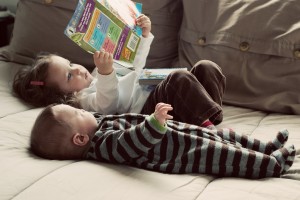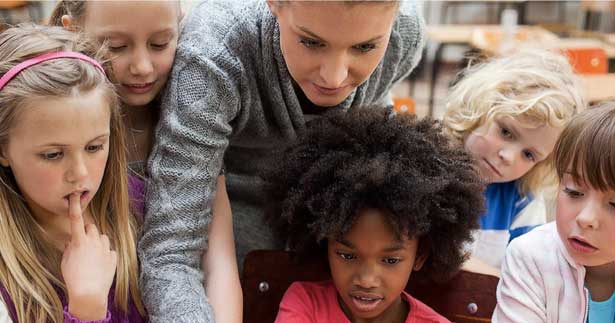Today’s children are surrounded by digital media of all kinds. How will they ever learn to read?
 That question is at the heart of Seeding Reading: Investing in Children’s Literacy in a Digital Age, a new series of articles and analysis brought to you by New America’s Education Policy Program and the Joan Ganz Cooney Center at Sesame Workshop. Over the next six months, we will be exploring early education and parenting initiatives that are harnessing new technologies; scrutinizing the marketplace of digital “reading” products; and highlighting new research that may illuminate how communications technologies and digital media are affecting the learning of reading, the act of reading, and the reading brain, in both good ways and bad.
That question is at the heart of Seeding Reading: Investing in Children’s Literacy in a Digital Age, a new series of articles and analysis brought to you by New America’s Education Policy Program and the Joan Ganz Cooney Center at Sesame Workshop. Over the next six months, we will be exploring early education and parenting initiatives that are harnessing new technologies; scrutinizing the marketplace of digital “reading” products; and highlighting new research that may illuminate how communications technologies and digital media are affecting the learning of reading, the act of reading, and the reading brain, in both good ways and bad.
The intersection of technology and reading is already populated with intriguing writing about teen and adult readers, whether it is by Clive Thompson in his new book Smarter Than You Think or Nicholas Carr in The Shallows. Common Sense Media, a non-profit advocacy and media-curation site, released a report this spring showing that, by their teenage years, students are not so interested in reading for pleasure, and that the amount of time children spend reading each day for pleasure “drops off significantly as they get older.”

This project will zoom in on the years when children are babies, toddlers, preschoolers and elementary school students. In those formative years for learning language and literacy skills, the digital age brings a paradox: Good reading skills are more important than ever for success in life, and yet children and their families are increasingly surrounded by new tools and digital distractions that affect the act of reading and communication. The Common Sense Media report, for example, showed a dip between 2006 and 2013 in the amount of time parents spent reading to their children.
Reading scientist Maryanne Wolfe, author of Proust and the Squid: The Story and Science of the Reading Brain, describes the challenge this way:
Will the present generation become so accustomed to immediate access to on-screen information that the range of attentional, inferential, and reflective capacities in the present reading brain will become less developed?
We started to grapple with these questions in 2012 with the release of Pioneering Literacy in the Digital Wild West: Empowering Parents and Educators, a paper that scanned the early literacy landscape to help us better understand how technology was being used and what role it should play. A sense of urgency runs through that paper and our new work: Reading comprehension skills among American students are, for the most part, distressingly weak. More than two-thirds of fourth-graders are not reading at grade level (known in research circles as “reading proficiently.”) Among disadvantaged children, the percentage is more than 80 percent.
And yet with challenge comes opportunity. With “always on” media around children and parents every day, what are some new ways to help turn children on to words, language and text, ideas? Could they feel even more agency and excitement about learning to read than the generations behind them? Could new technologies offer chances to children with reading difficulties that didn’t exist before? We won’t shy from the warning signs but throughout this project we will aim to uncover innovative ideas and spotlight new ways to seed reading for children of the digital age.
As Wolfe writes the end of her book:
The children and teachers of the future should not be faced with a choice between books and screens, between newspapers and capsuled versions of the news on the Internet, or between print and other media. Our transition generation has an opportunity, if we seize it, to pause and use our most reflective capacities, to use everything at our disposal to prepare for the formation of what will come next.
The first article of Seeding Reading is by guest blogger Sarah Jackson: Pediatricians Use Video Tools to Promote Early Literacy.The Seeding Reading project is conducted in partnership with the Campaign for Grade-Level Reading and was made possible by a grant from the Pritzker Children’s Initiative.


